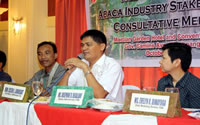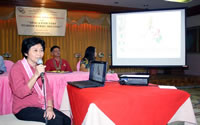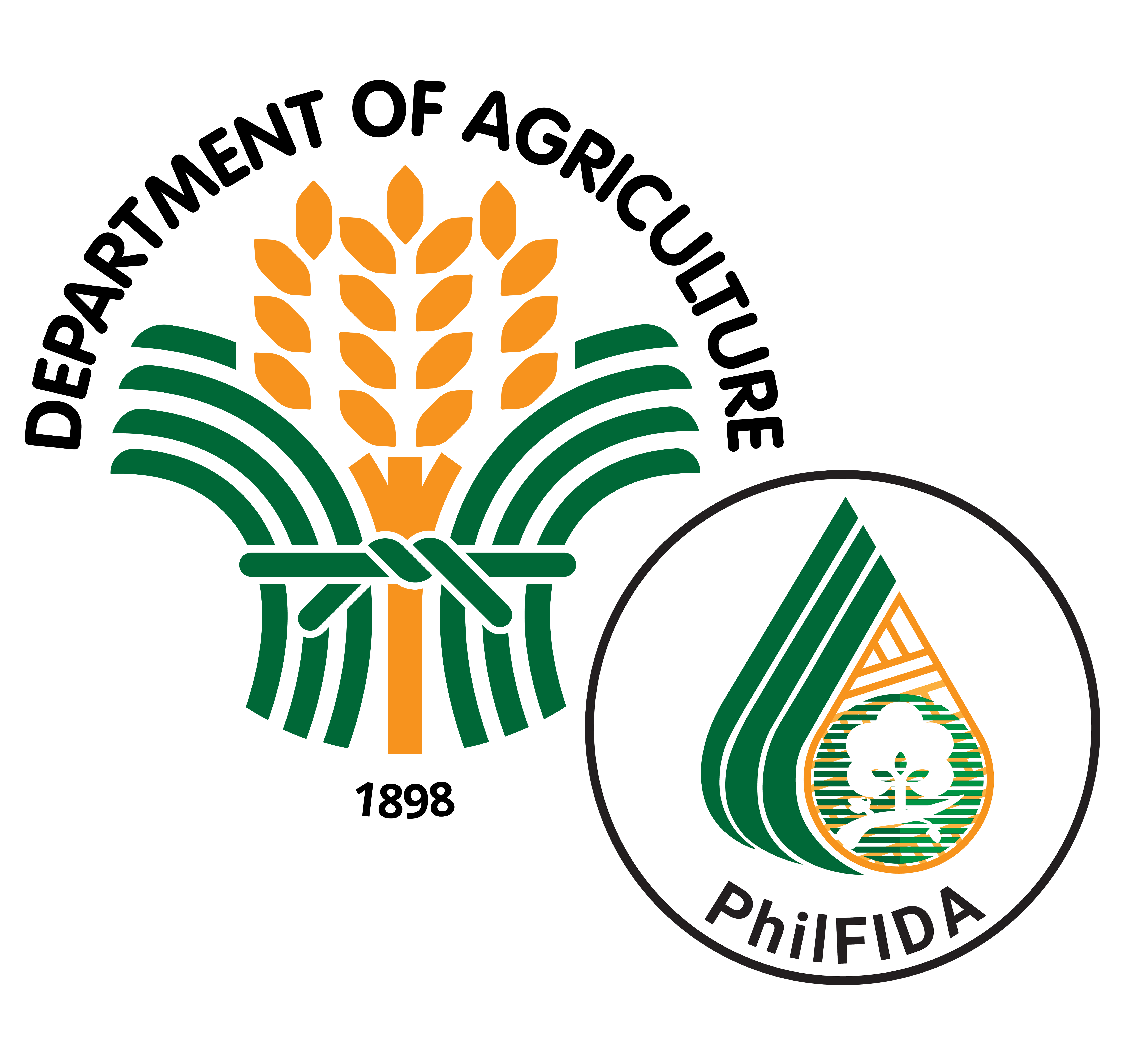FIDA HOLDS ABACA REGIONAL CONSULTATIVE MEETINGS
Date Posted April 2015
As part of FIDA’s continuing education and information campaign, FIDA conducted in 2010 a series of consultative meetings in five (5) major abaca-producing regions primarily to discuss with stakeholders issues and concerns affecting the production of abaca fibers. Specifically, focus of discussion were issues on production of abaca grades vis-à-vis market needs, quality requirements, price and Rainforest Alliance certification for abaca farms.
The meetings were held in Region VIII (Sogod, Leyte) on September 28, 2010, Region XI (Davao City) on October 14, 2010, Caraga Region (Butuan City) on October 21, 2010, Region IX (Zamboanga City) on October 28, 2010 and Region X (Cagayan de Oro City) on December 9, 2010.
A total of 367 industry stakeholders attended the meetings among whom were farmers/representatives of abaca cooperatives, traders, GBEs/exporters, processors, machine fabricators and representatives of local government units (LGUs).
Issues/Concerns Raised During the Meetings:
- Inferior quality of abaca fibers being produced/traded – FIDA has received complaints from both local and foreign buyers of the poor quality of abaca fibers that they have been buying/importing from the Philippines especially during tight
 supply situation. High moisture content of fibers, presence of foreign matters or mixture of different grades in a bale, and misgrading/mis-classification were some of these complaints aired by fiber buyers.
supply situation. High moisture content of fibers, presence of foreign matters or mixture of different grades in a bale, and misgrading/mis-classification were some of these complaints aired by fiber buyers.
The acceptable range of fiber moisture content is 12% to 14% but oftentimes the moisture content of abaca being traded even reached 20%. Damp fibers lead to further quality deterioration that reduces pulp recovery while the presence of contaminants such as plastics, twigs, cigarette butts, etc. damages the pulp that could result in the rejection of the entire lot/batch.
The practice of knotting the fiber strands damages the combing machine used by cordage companies and increases the cost of production if used for making pads/mattresses; knotted strand can also no longer be used for pulp production.
- Farmers not producing the grades that buyers require, particularly the high grades –while there is available supply of fibers, it is not of the grades and quality needed by the market, thus the difficulty especially of foreign buyers in getting the correct grades from the Philippines. Some farmers, however, contend that there are buyers who buy not only inferior quality (“timbre”) but also low grades and spurious abaca mixed with true abaca. Many farmers prefer to produce low grades of abaca because these are easy to strip and they get more fibers volumewise compared to high grades and that higher income is derived from its production.
- Price - farmers still perceive that the price they are getting for their abaca is low, comparing it with the price that they received in 2008. It was
stressed to the farmers that 2008 was an abnormal year when production was low that buyers were competing for the available fibers which pushed prices up. It was impressed upon the farmers that if they always expect a high price for their produce, there will come a time when buyers will no longer buy abaca. For farmers to get better prices, it was recommended to them to sell their fibers on a pre-classified and not on an all-in basis and also to produce good quality high grade fibers that the market demands.
pushed prices up. It was impressed upon the farmers that if they always expect a high price for their produce, there will come a time when buyers will no longer buy abaca. For farmers to get better prices, it was recommended to them to sell their fibers on a pre-classified and not on an all-in basis and also to produce good quality high grade fibers that the market demands.
At the current price level, some farmers said they are“lugi” prompting them to stop their abaca expansion. They appealed that the price of abaca be raised because increasing its price will encourage them to improve the quality of the fiber they are producing. Farmers also observed that the price difference between high and low grades abaca is small that they were not inclined to produce high grades of abaca.
Abaca areas are now situated in remote and/or in the mountains costing farmers high transport expenses in selling their fibers. They, therefore, find the price offered not reasonable enough to compensate for their expenses.
- Foreign buyers’ requirement for sustainability certification – major foreign buyers and users of abaca like the manufacturer of Lipton tea have started to require their suppliers for product certification from international certifying bodies like Rainforest Alliance. Buyers would like
 to be assured that the raw materials that they are using conform to standards that meet certain economic, social and ecological considerations. The certification will guarantee the future of abaca.
to be assured that the raw materials that they are using conform to standards that meet certain economic, social and ecological considerations. The certification will guarantee the future of abaca.
Most of the farmers are open to the certification although some have apprehensions particularly with regards to the cost of certification.
For small abaca farmers, they should form clusters, appoint a group administrator and apply for a group certification. Farmers can request their major buyer to share in the expenses involved in the certification process or appoint the buyer as the group administrator. In Indonesia, buyers of cocoa beans applied for the certification of the cacao farms where they get their supplies.
- Sourcing of abaca planting materials – there are areas which need assistance in sourcing planting materials for those who would like to establish/expand their abaca plantations. For the weaving industry, it would also like to get hold of abaca varieties from which high grade and quality of fiber can be extracted.
- Lack of abaca strippers – some abaca plantations in Mindanao, particularly in Zamboanga , have mature abaca plants which farmers could not harvest because of the lack of strippers. Some resorted to hiring abaca strippers from the Visayas. Also, the lack of experienced strippers contributes to more wastage in the extraction of fiber and resulted in the production of “timbre” fiber.

